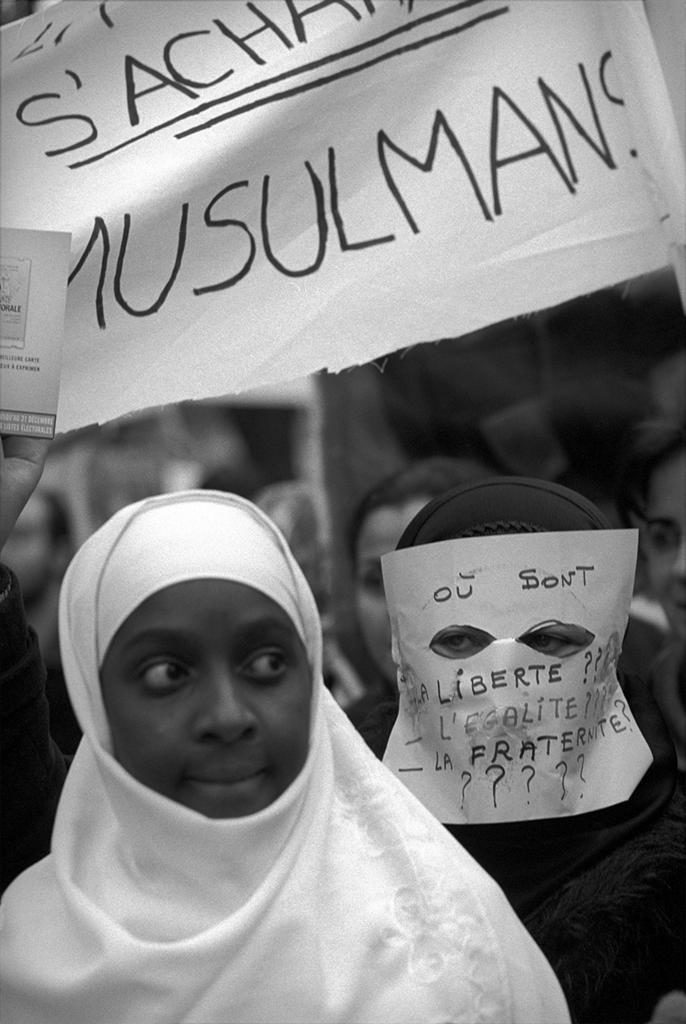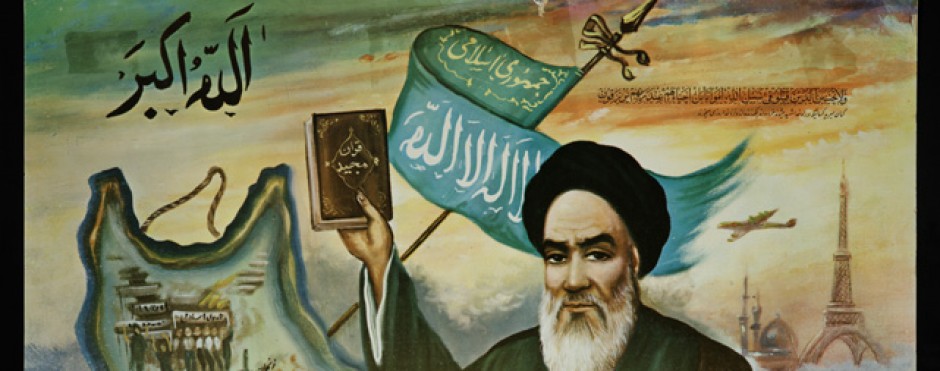
The typical American student, let’s call him Ryan, who might pay attention in his Social Studies class, would probably define Secularism as, ‘the separation of church and state.’ However, Secularism is not simply the act of separating two spheres, which emphasizes how it is not a black or white topic. This principle is dependent on its motivations, location, and actors involved. While this is a principle often thought of as a staple of Modernity in the current global community, there are several examples of nation states employing this principle who also jeopardize other prominent modern ideals such as freedom and equality (Hancock 167).
A clear example of this can be seen in the contested Muslim Fashions within Secular nation states, and can help to answer the foggy gray area of how Secularism plays a role in the attainment of Modernity. I am going to display for you the debates surrounding Muslim Fashion in both France and Turkey, because each is founded upon Secularism. We shall see how the Secular practices of these states hinder the attainment of Modernity, rather than allow the achievement of it.
Let’s first explain the background of the Islamic Veil before applying it to these individual cases of political struggle. Historically, most often when discussing Western states, the Islamic Veil has been considered ‘antithetical’ to Modernity, and has been inflated by the non-Muslim obsession with its use among Muslim Women (Bucar 1). This can demonstrate why in both Turkey and France, the limiting of religious dress such as the Veil is restricted to secure Secular ideals. The Veil has been tied to Islamic Fundamentalism, because Orientalist actions as well as rhetoric have managed to socially construct the way in which the Veil is treated. We can thank Western Feminism, Secularism, and the hegemonic style of Christianity for this (Bucar 10).
This has also been done to the entirety of Islam, which is homogenized when such sentiments use “the Muslim World,” to address all Muslims, who all have a varying degree of identities, which is contrary to what Ryan (our high school student) might have thought before reading this (Aydin 2). To go further, the Veil has symbolically become entangled with concerns over the influence of political Islam, the stability of developing democracies, and the role of religious freedom in religiously plural societies (Bucar 14). With all of this in mind, let us dissect individual case studies of Muslim Fashion within the Secular realm. When speaking of Muslim Fashion, we must remember that this is not only defined as clothing, but the look of one’s style choices holistically, which includes hair, makeup, etc.
Let’s start with France, which is known as being an indivisible, democratic, and Secular social republic that does not keep track of statistics regarding the population’s races, religions, or other ethnic origins (Honicker 138-139). While it may not be noted whether or not a citizen might be a practicing Muslim, it can be argued that the Muslim population in France has been singled out as being other. Laïcité, which is the French word for ‘Secular,’ is a strong principle employed by the state, and can be considered the most profound reason for why Muslims feel singled out within their own country (Honicker 143).
With a long history, it is fair to note that there is still debate concerning the meaning of Laïcité, but it predominantly resembles the neutrality of public space, and the unity of the community (Honicker 141). This means that religion is only to be done in the private, not the public realm, which points to the debate of Muslim Fashion in public spaces.
Muslim Fashion such as the Veil can also be understood by a means of analyzing France’s history as a colonial power. The Veil symbolized dominance in their colonies, which shows that women were essentially pieces of property in an exchange for hegemonic global power (Honicker 142). Traces of this colonial understanding can be seen in the French climate of today, in how the Veil is viewed as both oppressive and counter to French ideals. Within the past thirty years, there have been a series of laws centered around whether it is acceptable both socially and legally to Veil in public spaces, because it is understood as keeping the people of France from “coming together” (Honicker 140). However, this method only brings those together who are dressing in a Secular fashion, and hurts the notion that France cares about equality.
Now that we have an understanding of the French version of Secularism, we can compare this older state to a newer one. Turkey, which was established in the early 20th Century and has modeled many of its values off of the French, has its own term known as Laiklik. This is similar to Laïcité, but has both cultural and historical differences surrounding its prominence. In its short history, Turkey has had issues with Islamic Veiling, but this hasn’t stopped middle to upper class women in the country from dressing how they please.
For instance, Tesettür is a newer type of pious fashion that is very popular in Istanbul, which features headscarves and other articles of modest clothing that are often quite beautiful, and almost always designer brand (Bucar 128). While these women are free to veil in certain spaces, there have been a series of restrictions on how one can veil and where in the past, such as when the Turkish National Security Council and the Council of Higher Education (YÖK) issued a ban on headscarves in 1981 at Turkish colleges and universities (Bucar 127).
Mustafa Kemal Atatürk, who was the first President of the Republic of Turkey, branded a principle of his own called Kemalism (Bucar 126). His ideology promoted western and modern institutions in order to make the country better for the long term. This managed to bring upon the notion that the Islamic Veil was a threat to this newly progressive and emerging state (Bucar 127).
It’s all too common in the world that even though privately, a woman is allowed to dress how she pleases, societal standards are still a large factor in how women feel they must dress. Regardless of the type of fashion, it’s clear that female bodies are policed, not just in the ‘Muslim World.’ Ryan, I hope you are paying attention.
Women in Istanbul for example are free to Veil today, but there is an understanding of what is and isn’t appropriate. For instance, the pinning of the veil in Turkey was considered to be a political statement in the 1980s for how pious it was, and it is now socially unacceptable, and even women who Veil agree (Bucar 137). Also, if one does not dress in Tesettür properly, meaning in a Eurocentric and aesthetically pleasing way, the outfit itself can be seen as politically destabilizing (Bucar 150).
This Turkish climate displays how the government regulates and administers religious expression, and in this way polices what can be worn in the public sphere. The public ridicule as well as the government intervention of Muslim Fashion displays inadvertent Orientalism used by Turks against their fellow citizens, which can speak volumes as to how ‘modern’ these Secular practices truly are (Bucar 153).
These are two cases that depict how strong Secular values can prohibit the freedom of the individual. There is a strong correlation between the female body and the geopolitical agenda of a nation state, which has been a historical trend often left out of the conversation of Modernity. It is important to question whether the actions that both of these countries have taken display how a government is overreaching its boundary of entering the private sphere of its citizens (Hancock 166).
In both countries, public schools were being targeted as the battleground for Islamic Fundamentalism. In France specifically, students who dressed according to their faith were singled out, and suffered the consequences of being kicked out or forced to transfer to another school (Hancock 171). In Turkey, current President Erdogan forced his own daughters to attend school in the United States, and a possible reason could be that they both Veil (Hancock 165). Clearly, I could go further to demonstrate not only the politicization of women’s bodies, but also how their visibility is deemed as directly reflective of whether or not a state has achieved Modernity.
Ryan, if you are still following me by now, I hope you learned more about Secularism than what is written in the U.S. Constitution. One could attempt to argue against me by noting that the masculine control over female bodies could have nothing to do with Modernity, and could simply be a means of just marginalizing immigrant and minority populations (Hancock 174). It’s obvious, at least in my eyes, that there is a direct link between Muslim Fashion and efforts upon a nation state to become more modern.
While these countries are following Secular practices in order to better the common good, these actions seem entirely counterproductive to the wellbeing of the citizenry. Undoubtedly, Secularism does not have an automatic seat at the table when it comes to the realm of Modernity, as can be seen through our discussion above of Muslim Fashions in both France and Turkey. Right Ryan?
Bibliography
Abbas. Veiling Paris. 2004. FRANCE. Paris. January-February. Thousand Muslims… http://library.artstor.org/asset/AMAGNUMIG_10311553063. Web. 19 Feb 2018.
Aydin, Cemil. “Introduction: What is the Muslim World?” The Idea of the Muslim World; A Global Intellectual History, Harvard University Press, 2017, pp. 2.
Bucar, Elizabeth. The Islamic Veil; A Beginner’s Guide. One World Publications, 2012, pp. 1-48.
Bucar, Elizabeth. Pious Fashion. Harvard University Press, 2017, pp. 122-170.
Göl, Ayla. “The Identity of Turkey: Muslim and Secular.” Third World Quarterly, vol. 30, no. 4. Routledge, 2009, pp. 794-811.
Hancock, Claire. “Spatialities of the Secular: Geographies of the Veil in France and Turkey.” The European Journal of Women’s Studies, vol. 15, no. 3, 2008, pp. 165, ProQuest, https://search.proquest.com/docview/212165116?accountid=14679.
Honicker, Nancy. “The “Headscarf Affairs”: French Universalism Put to the Test.” Journal of Research in Gender Studies, vol. 1, no. 1, 2011, pp. 138-146, ProQuest, https://search.proquest.com/docview/1282570977?accountid=14679.
